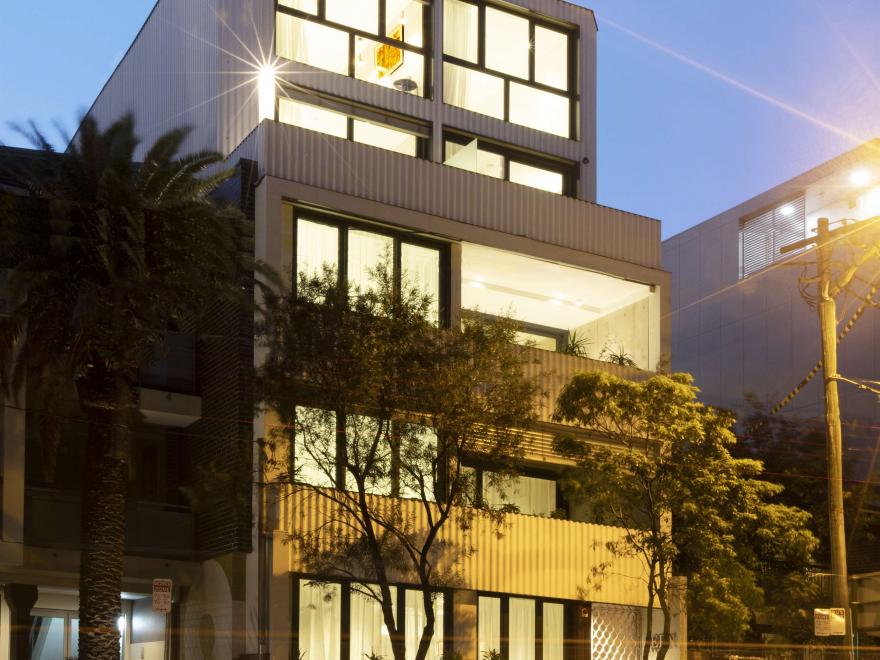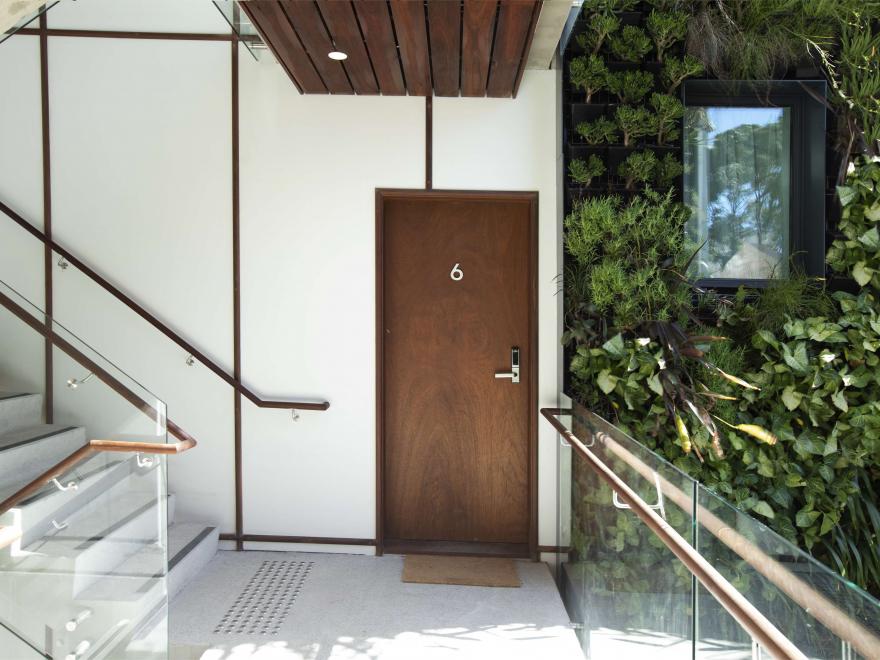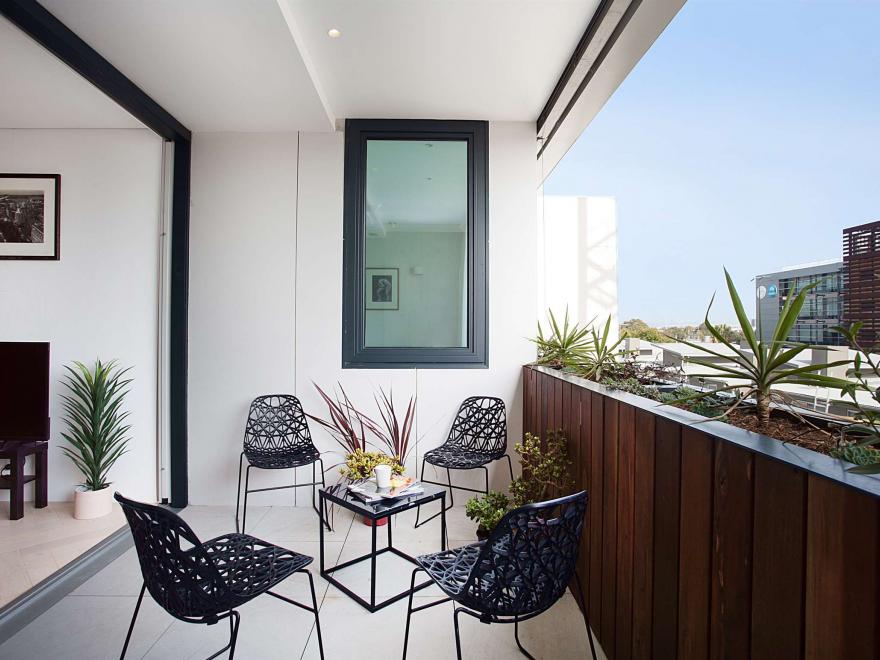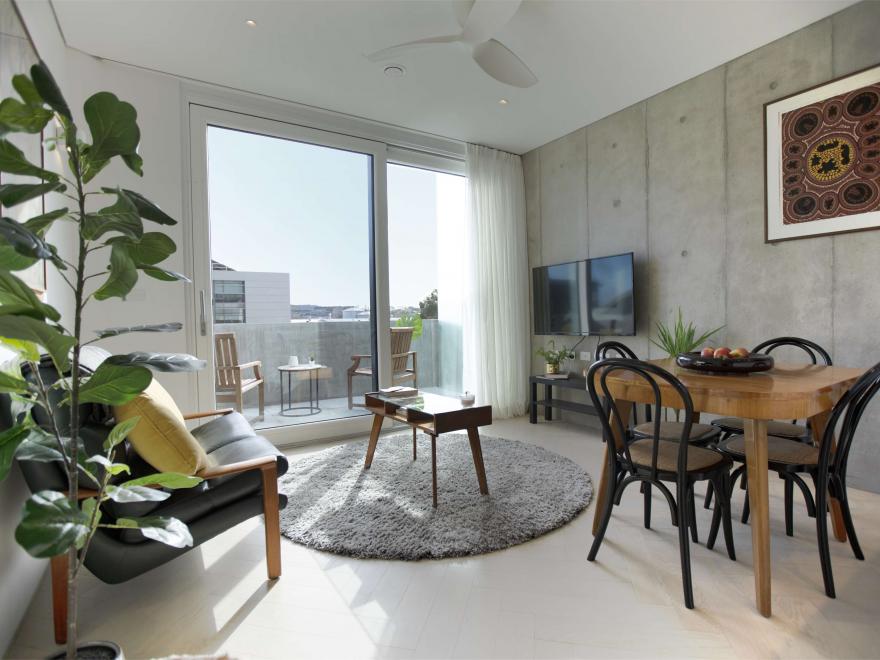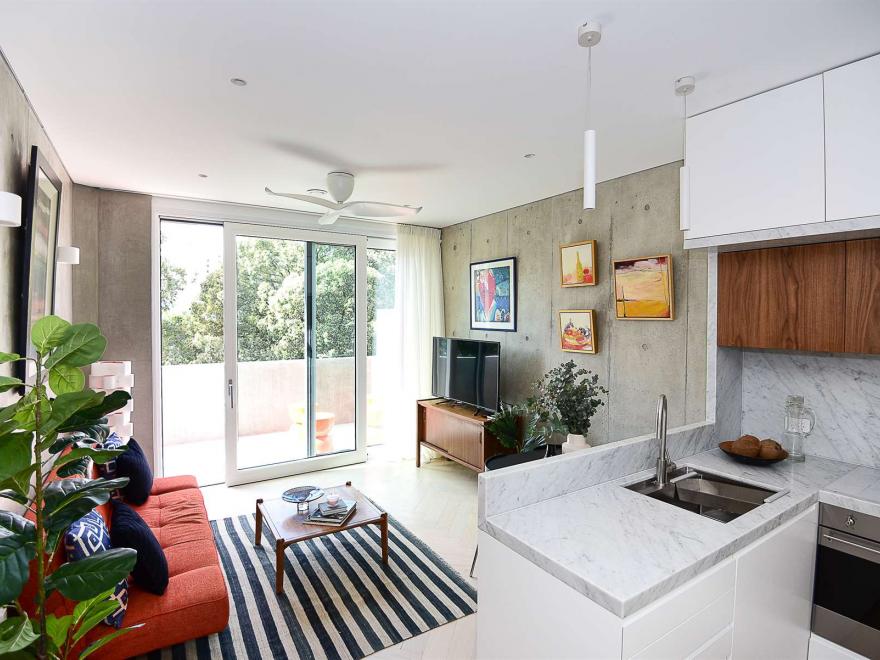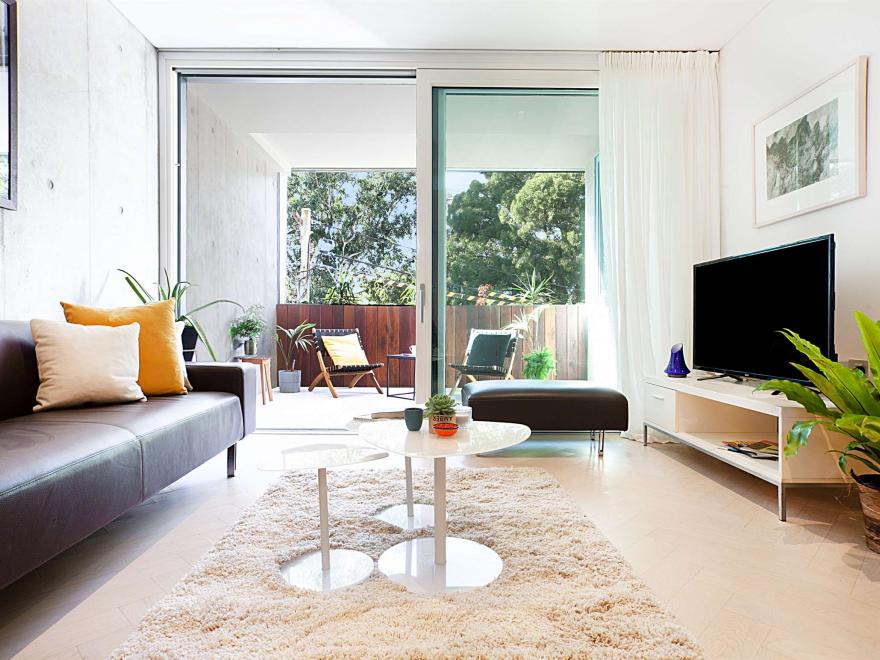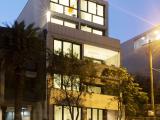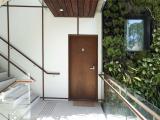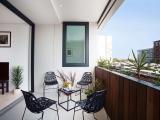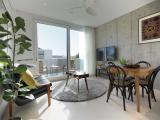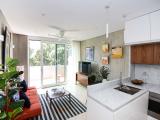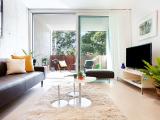The builders chose to make The Fern Passivhaus because it is the most rigorous, comprehensive method of green building, with predictably high levels of comfort and efficiency. As it is the first apartment building of its type in Australia, the builders faced many challenges and found innovative solutions. Passivehaus is a scientific approach to building that focuses on five key strategies to reduce energy consumption and improve internal environmental quality; eliminating thermal bridges; airtightness; high-performance glazing; good insulation; and heat recovery ventilation. One of The Fern’s most important innovations was to design and build Sydney’s first structural thermal breaks, to eliminate thermal bridges. These are commercially available in Europe, but are oversized and also cost prohibitive in Sydney’s benign climate, so the builders invented a new design at approximately a third of the price. A study by CSIRO has found that an average home in Sydney has an air infiltration rate of 20.8 air changes per hour when tested at 50 pascals (20.8 ACH@50Pa). The Fern’s infiltration rate is below 0.6 ACH@50Pa for every apartment. This provides improved thermal comfort; eliminating draughts; reducing noise, dust and pollutants; and pest exclusion. The Fern uses triple glazing in windows and doors, with argon-filled gaps. This keeps the inside cosy in winter, and double Low-Emissivity coating keeps the sun’s heat out in summer. Insulation at The Fern is roughly double the insulation level typically used in Sydney apartments, and is installed as a continuous barrier rather than between structural elements. This eliminates thermal bridges and acts as a blanket to cocoon the living spaces. The roof is R7.0, walls are R3.5, and floors are R1.5. Heat Recovery Ventilation (HRV) works continuously to replace stale air within the apartments with fresh outdoor air, which is first filtered and then passed through a heat exchanger to maintain a comfortable indoor temperature in an energy-efficient way. Concrete has a large amount of embodied energy, causing a high environmental impact. This impact has been reduced by using 3-point Green Star concrete, in which 40 per cent of the cement and 40 per cent of the aggregate is replaced with industrial waste products such as fly ash and blast furnace slag. Low-VOC paints and finishes are used throughout interiors. The concrete walls are finished with a natural Carnauba wax internally for a natural glow that varies throughout the day. Timber joinery is oiled with natural Tung Oil that won’t scratch like other timber finishes. The distinctive exterior cladding is corrugated magnesium oxide board and is finished with a mineral paint that will never require a further coat. The Fern is one of a kind in Australia, and spells the beginning of a trend of truly elevated, sustainable urban living. The Fern is a worthy winner of the 2020 Excellence in Environmental Management – Medium Density Housing.
Search form
Steele Associates - WINNER
Steele Associates - WINNER
- Home
- Previous Excellence Winners
- Steele Associates - WINNER


